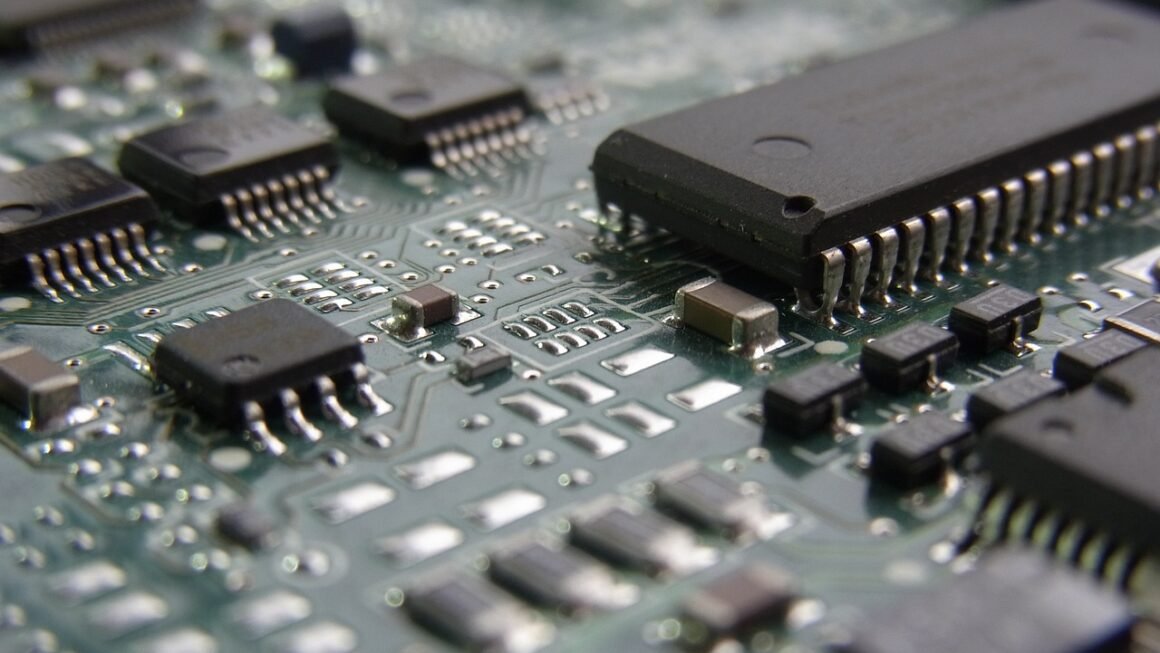Robotics is rapidly transforming industries and reshaping our daily lives. From automated manufacturing to complex surgical procedures, robots are becoming increasingly sophisticated and versatile. This blog post will delve into the multifaceted world of robotics, exploring its various applications, underlying technologies, and future trends.
What is Robotics?
Defining Robotics
Robotics is an interdisciplinary field that integrates computer science, mechanical engineering, electrical engineering, and other disciplines to design, construct, operate, and apply robots. A robot is essentially a programmable machine capable of carrying out a complex series of actions automatically, often mimicking human abilities.
Key Components of a Robot
A typical robot comprises several essential components working in harmony:
- Sensors: These gather information from the robot’s environment. Examples include:
Cameras (for visual input)
LIDAR (for range detection)
Force sensors (for measuring pressure and force)
Proximity sensors (for detecting nearby objects)
- Actuators: These are the “muscles” of the robot, providing the force and motion required for tasks. Common actuators include:
Electric motors
Hydraulic cylinders
Pneumatic cylinders
- Control System: This acts as the robot’s “brain,” processing sensory information and controlling the actuators to execute programmed instructions. The control system often includes:
Microcontrollers
Programmable Logic Controllers (PLCs)
Embedded computers
- Power Supply: Provides the necessary energy to operate the robot. This can be:
Batteries (for mobile robots)
AC power (for stationary robots)
The Impact of Robotics Across Industries
Manufacturing
Robotics has revolutionized manufacturing, leading to increased efficiency, precision, and safety. Automated assembly lines utilize robotic arms to perform repetitive tasks, such as welding, painting, and material handling. According to the International Federation of Robotics (IFR), the automotive industry is one of the largest adopters of industrial robots.
- Benefits of Robotics in Manufacturing:
Increased production speed
Improved product quality and consistency
Reduced labor costs
Enhanced worker safety by automating hazardous tasks
Healthcare
Robotics plays a growing role in healthcare, assisting surgeons with minimally invasive procedures, delivering medication, and providing rehabilitation therapy. Surgical robots, like the da Vinci Surgical System, allow for greater precision and control during complex surgeries.
- Examples of Robotics in Healthcare:
Surgical Robots: Assist surgeons in performing complex procedures with enhanced precision and minimally invasive techniques.
Rehabilitation Robots: Help patients recover motor skills and regain mobility after injury or stroke.
Pharmacy Automation: Dispense medications accurately and efficiently, reducing the risk of errors.
Disinfection Robots: Use UV light or other methods to sanitize hospital rooms and equipment, preventing the spread of infections.
Logistics and Warehousing
Robotics is transforming logistics and warehousing operations, optimizing inventory management, and speeding up order fulfillment. Autonomous mobile robots (AMRs) navigate warehouses, picking and transporting goods, while automated guided vehicles (AGVs) follow predefined paths to move materials.
- Key Applications in Logistics:
Order Fulfillment: Robots pick, pack, and ship orders quickly and accurately.
Inventory Management: Drones and robots track inventory levels and locations.
Last-Mile Delivery: Autonomous vehicles and drones deliver packages directly to customers.
Agriculture
Robotics is enhancing agricultural practices, enabling precision farming, automated harvesting, and efficient resource management. Robotic harvesters can identify and pick ripe fruits and vegetables, while drones monitor crop health and apply pesticides selectively.
- Applications in Agriculture:
Automated Harvesting: Robots harvest crops with greater speed and accuracy than manual labor.
Precision Farming: Robots and drones monitor crop health, soil conditions, and water levels to optimize resource usage.
Weed Control: Robots identify and remove weeds without the use of herbicides.
Key Technologies Powering Robotics
Artificial Intelligence (AI) and Machine Learning (ML)
AI and ML are crucial for enabling robots to perform complex tasks, learn from experience, and adapt to changing environments. Robots use AI algorithms for object recognition, path planning, and decision-making.
- Examples:
Computer Vision: AI algorithms enable robots to “see” and interpret images from cameras, allowing them to identify objects and navigate environments.
Natural Language Processing (NLP): Enables robots to understand and respond to human language, facilitating human-robot interaction.
Reinforcement Learning: Robots learn to perform tasks by trial and error, receiving rewards for successful actions and penalties for errors.
Sensors and Perception
Advanced sensors and perception systems provide robots with the ability to perceive their surroundings and interact with the physical world. These sensors collect data about the environment, which is then processed by the robot’s control system.
- Types of Sensors:
Cameras: Provide visual information about the environment.
LIDAR (Light Detection and Ranging): Creates a 3D map of the environment using laser beams.
Radar: Detects objects and measures their distance and velocity using radio waves.
Ultrasonic Sensors: Measure distances using sound waves.
Inertial Measurement Units (IMUs): Measure orientation, angular rate, and linear acceleration.
Navigation and Motion Planning
Navigation and motion planning algorithms enable robots to move autonomously in complex environments, avoiding obstacles and reaching their destinations efficiently. These algorithms consider factors such as robot kinematics, sensor data, and environmental constraints.
- Types of Navigation Techniques:
SLAM (Simultaneous Localization and Mapping): Robots build a map of their environment while simultaneously localizing themselves within the map.
Path Planning Algorithms: Robots find the optimal path to reach a target location, avoiding obstacles along the way.
* Obstacle Avoidance: Robots detect and avoid obstacles in real-time.
The Future of Robotics
Increased Autonomy and Intelligence
Robots will become increasingly autonomous and intelligent, capable of performing complex tasks with minimal human intervention. Advances in AI and ML will enable robots to learn from experience, adapt to changing conditions, and make decisions independently.
Human-Robot Collaboration
Robotics will lead to greater human-robot collaboration, where humans and robots work together to achieve common goals. Collaborative robots, or cobots, are designed to work safely alongside humans in shared workspaces. This type of collaboration combines the strengths of both humans and robots, leading to increased productivity and efficiency.
Expanding Applications
Robotics will find applications in new and emerging fields, such as space exploration, disaster response, and personalized healthcare. Robots can perform tasks that are too dangerous, difficult, or time-consuming for humans. They can explore planets, search for survivors after natural disasters, and provide personalized medical care.
Ethical Considerations
As robots become more integrated into our lives, it is essential to address the ethical considerations surrounding their use. Issues such as job displacement, data privacy, and algorithmic bias need to be carefully considered. It is crucial to develop ethical guidelines and regulations to ensure that robots are used responsibly and for the benefit of society.
Conclusion
Robotics is a rapidly evolving field with the potential to transform industries and improve our lives in countless ways. From manufacturing and healthcare to logistics and agriculture, robots are becoming increasingly sophisticated and versatile. By understanding the key technologies and addressing the ethical considerations surrounding their use, we can harness the full potential of robotics to create a more efficient, productive, and sustainable future. The continued development and implementation of robotics promises a future where machines and humans work collaboratively to solve complex problems and improve our quality of life.



